Many people think running your car is okay when the fuel filter isn't full. But is it really okay? We've researched whether running your car with a partially filled fuel filter is safe, and here's what we found.
Your car has two fuel filters. one inside the tank (fuel tank filter) and one that is connected between the fuel hoses (inline fuel filter). While it's not ideally possible to run with a full tank all the time, you should ensure you have at least a quarter full fuel in your fuel tank and at least half full in your inline fuel filter. This applies to 2-stroke (lawnmowers) and 4-stroke engines (cars).
In the following sections, you're going to learn why it's important to have a proper fuel level in the fuel system and learn why you shouldn't let the level drop too low. We'll also answer popular questions asked by people that are relevant to our topic. In addition, we'll also show you how to replace your fuel filter so read on!
Why Is It Important To Have Proper Fuel Level For Your Car's Fuel Filters To Be Efficient?
Fuel filters are part of your car's fuel system. They serve as primary filters to keep impurities out of your gas. These filters are usually placed in your gas tank and between the fuel hose connection.
In addition, as your car runs, gasoline gets pushed through the filter. The filter removes any particles from the gas. If the fuel level is too low, there will not be enough fuel going through the fuel line resulting in air bubbles forming and causing the car to misfire and stall.
Signs Of a Bad Fuel Filter
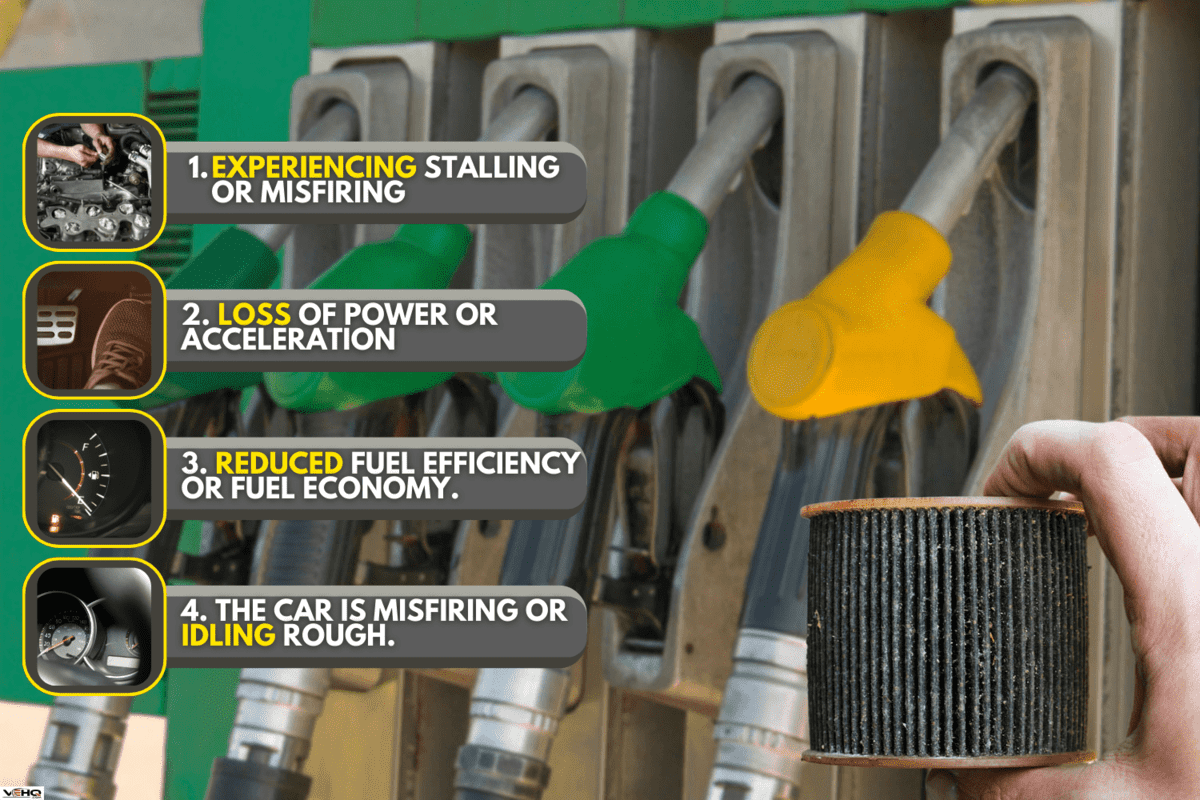
A bad fuel filter will not only lead to poor fuel economy but can also cause expensive repairs to the vehicle. Here are some signs that your fuel filter is bad:
- Difficulty starting or experiencing stalling or misfiring.
- Loss of power or acceleration when driving.
- Reduced fuel efficiency or fuel economy.
- The car is misfiring or idling rough.
If you are experiencing any of these issues, it is a good idea to have your fuel filter checked by a mechanic to determine if it needs to be replaced. It is also a good idea to replace the fuel filter at regular intervals as part of routine maintenance.
How To Check Fuel Filters
Fuel filters ensure that the fuel being burned in the engine is as clean as possible, which improves the performance and efficiency of your car.
In addition, a dirty or clogged fuel filter can cause problems with the fuel system, such as reduced fuel pressure, which can lead to poor engine performance and reduced fuel efficiency.
Checking and replacing the fuel filter on a regular basis can help to prevent these problems and keep your car running smoothly.
How to check fuel tank filter
To check the fuel tank filter, you'll need to locate the filter and then perform a visual inspection. Here are the steps you can follow.
Locate the fuel tank filter
For carburetor-run cars, the fuel tank filter is usually located near the fuel pump, which is inside the fuel tank. For fuel-injected cars, you may need to consult the car owner's manual to find its exact location.
But one thing's for sure though, your car's fuel filter can be anywhere between the two possible locations: between the fuel lines or inside the fuel tank.
Prepare for the inspection
Before inspecting the fuel tank filter, make sure that the engine is off and that the fuel tank is cool to the touch. It's also a good idea to wear gloves and eye protection to protect yourself from any spills or splashes.
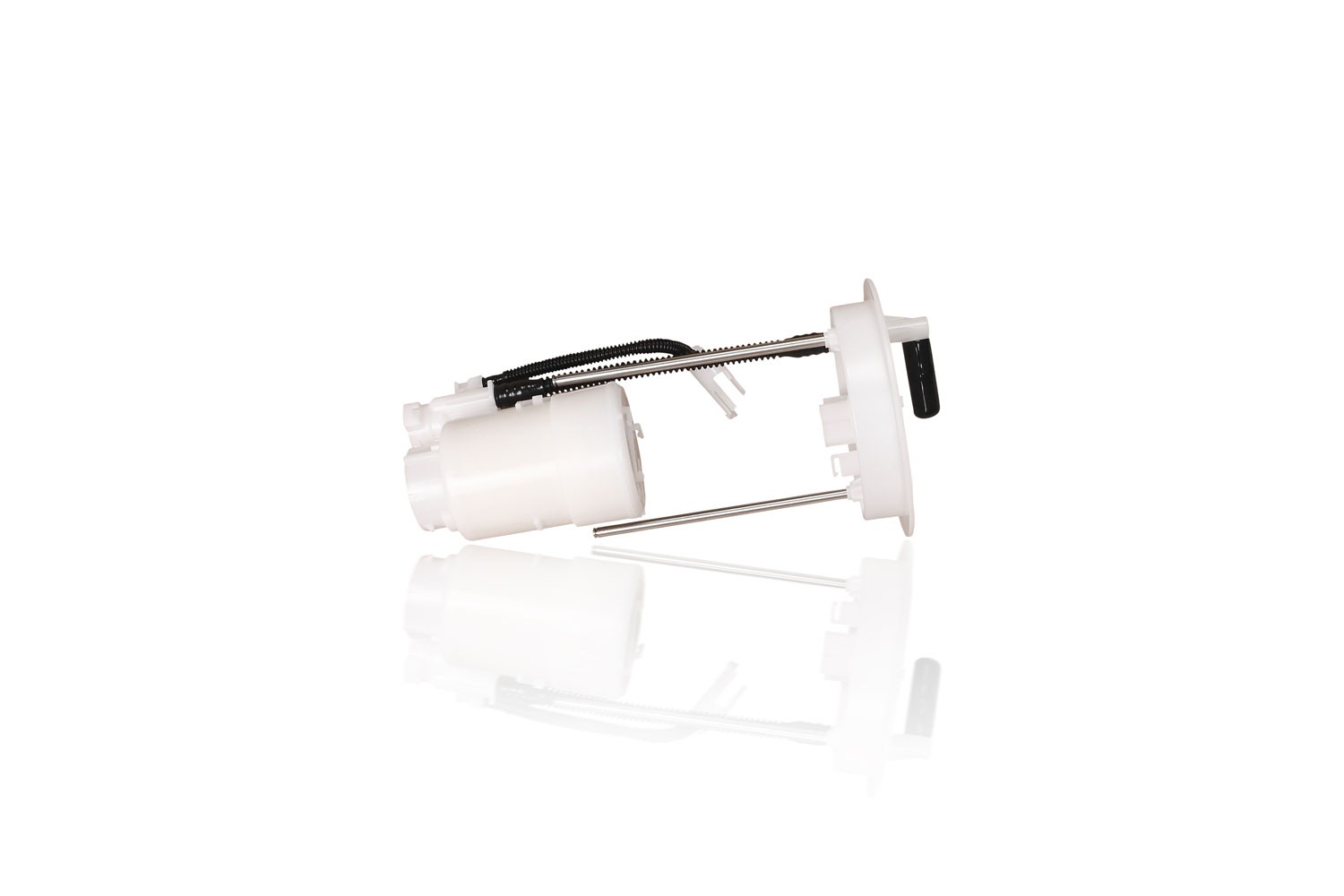
Visually inspect the filter
Once you've located the fuel tank filter, you can inspect it visually. Look for any signs of damage or wear, such as cracks, holes, or loose fittings. If you notice any issues with the filter, it will need to be replaced.
Check the filter for gunk
If the filter looks in good condition, you can check for gunk by removing it from the fuel tank. To do this, you'll need to disconnect the fuel lines and remove the mounting bolts.
Further, once the filter is removed, inspect closely to see if any gunk is present. If you see gunk and notice that the filter is clogged, it will need to be cleaned with a carb cleaner. This should loosen hardened and stubborn gunk. Finally, apply compressed air to remove and free the filter from gunk.
Check out this carburetor cleaner on Amazon.
Reinstall the filter
If the filter looks clean and is in good condition, you can reinstall it by reversing the steps you used to remove it. Make sure that all the fittings are tightened properly and that the fuel lines are properly connected.
https://www.youtube.com/shorts/ra_Oe52jIfw
How to check inline fuel filter
To check an inline fuel filter, you will need to locate the filter in the fuel line. This is usually easy to do, as the fuel filter is typically located in a relatively accessible location, such as between the fuel line connection. Once you have located the filter, you can perform the following steps to check it.
Prepare the car
Make sure the car is turned off and that you have all the necessary tools and safety equipment on hand. To avoid the possibility of igniting gas fumes, disconnect the battery's negative terminal.
Relieve the fuel system pressure
If your car is fuel-injected, you may need to relieve the fuel system pressure before you can remove the fuel filter. Consult your car's service manual for specific instructions on how to do this.
Basically, it's just a matter of loosening the fuel filler cap and removing the fuel pump fuse after starting the engine.
Disconnect the fuel lines
Locate the inlet and outlet fuel lines on the filter. Use a fuel line disconnect tool or a pair of pliers to carefully loosen and remove the fuel lines from the filter.
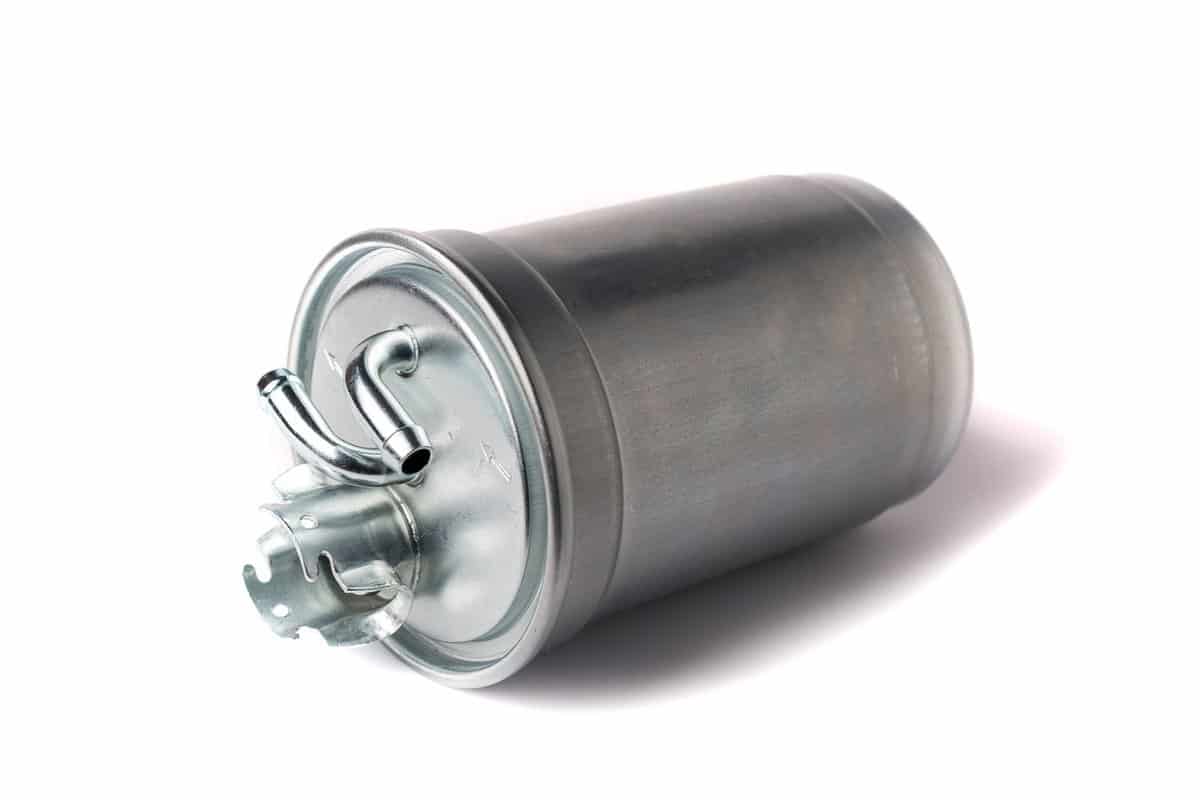
Remove the filter
Once the fuel lines have been disconnected, you should be able to remove the filter from its mounting bracket or housing.
Furthermore, some filters are secured with a hose clamp on top of the mounting bolts and screws. Check the bolt and screw sizes and use the appropriate tools to remove the filter.
Check out this socket set on Amazon.
Inspect the filter
Hold the filter up to a light source and look for any signs of contamination or clogging. If the filter appears to be dirty or clogged, it will need to be replaced. Never attempt to clean and reuse an already-used fuel filter!
Reinstall the filter
If the filter looks good, you can reinstall it. To reinstall the filter, simply reverse the steps you took to remove it. Make sure the fuel lines are securely attached to the filter and that the filter is properly seated in its mounting bracket or housing.
Test the car
Once the filter has been reinstalled, start the car and let it run for a few minutes to ensure that the filter is functioning properly. If the car runs smoothly, you're all set. If you experience any issues, you may need to further diagnose the problem.
What Happens If You Get Air Bubbles in Your Car's Fuel System?
If you get air bubbles in your car's fuel system, it can cause a variety of problems, including:
Reduced fuel efficiency
Air bubbles in the fuel system can reduce the amount of fuel that reaches the engine, which can lead to lower fuel efficiency.
Poor engine performance
Air bubbles can also interfere with the normal flow of fuel to the engine, which can cause it to run poorly or even stall.
Damage to the fuel pump
If the air bubbles are not removed from the fuel system, they can cause damage to the fuel pump by creating excess wear and tear on the pump's internal components.
How To Remove Air Bubbles From Your Car's Fuel System
According to Greg Mahoney, a former technician at Ford Motor Company, to remove air bubbles from your car's fuel system, you will need to bleed the air out of the fuel system.
For fuel-injected systems, this typically involves depressing a valve that looks like a tire air valve that is seated along the fuel rail and running the engine.
Allow the air to escape until fuel begins to flow out of the line. You may need to do this several times to completely remove all of the air from the system.
Additionally, it's also a good idea to try to determine the cause of the air bubbles in the first place, as this will help prevent the problem from occurring again in the future. Possible causes of air bubbles in the fuel system include a leak in the fuel line, a faulty fuel pump, or a problem with the fuel filter.
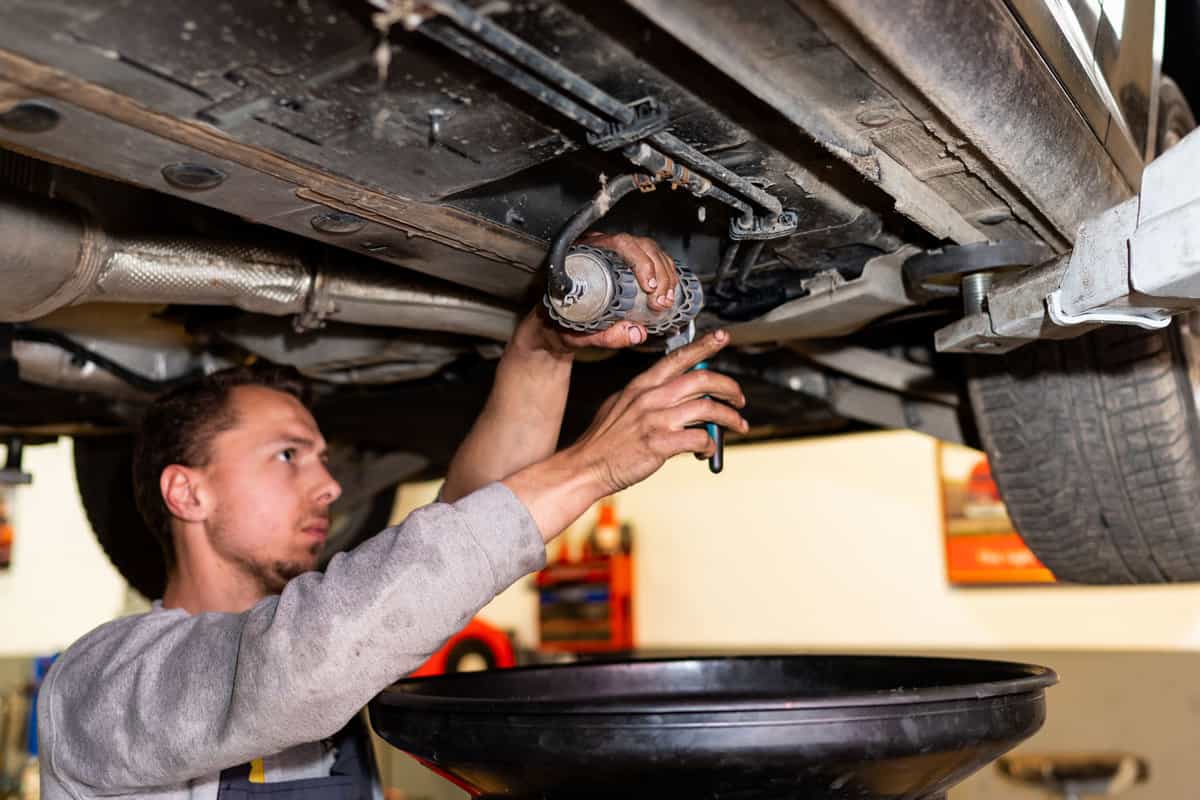
What Happens If I Over-Tighten the Fuel Filter Upon Reinstallation?
If you over-tighten a fuel filter, it can cause the filter housing to crack or break. This can lead to fuel leaking from the filter, which can be a fire hazard.
A damaged fuel filter may not function properly, allowing dirt and other contaminants to pass through into the engine, potentially causing damage.
In addition, it is important to follow the manufacturer's recommended torque specifications when installing a fuel filter. This is to ensure that it is tightened properly and to avoid potential problems.
How Often Should a Fuel Filter Be Replaced?
The frequency with which you should replace your fuel filter depends on several factors. This includes the age and make of your vehicle, the type of fuel you use, and the conditions in which you drive.
In general, it is a good idea to replace your fuel filter every 20,000 to 150,000 miles or every two to three years, whichever comes first.
However, if you drive in very dirty or dusty conditions, you may need to replace it more frequently. You should consult your vehicle's owner's manual or a mechanic for specific recommendations for your vehicle.
In Closing
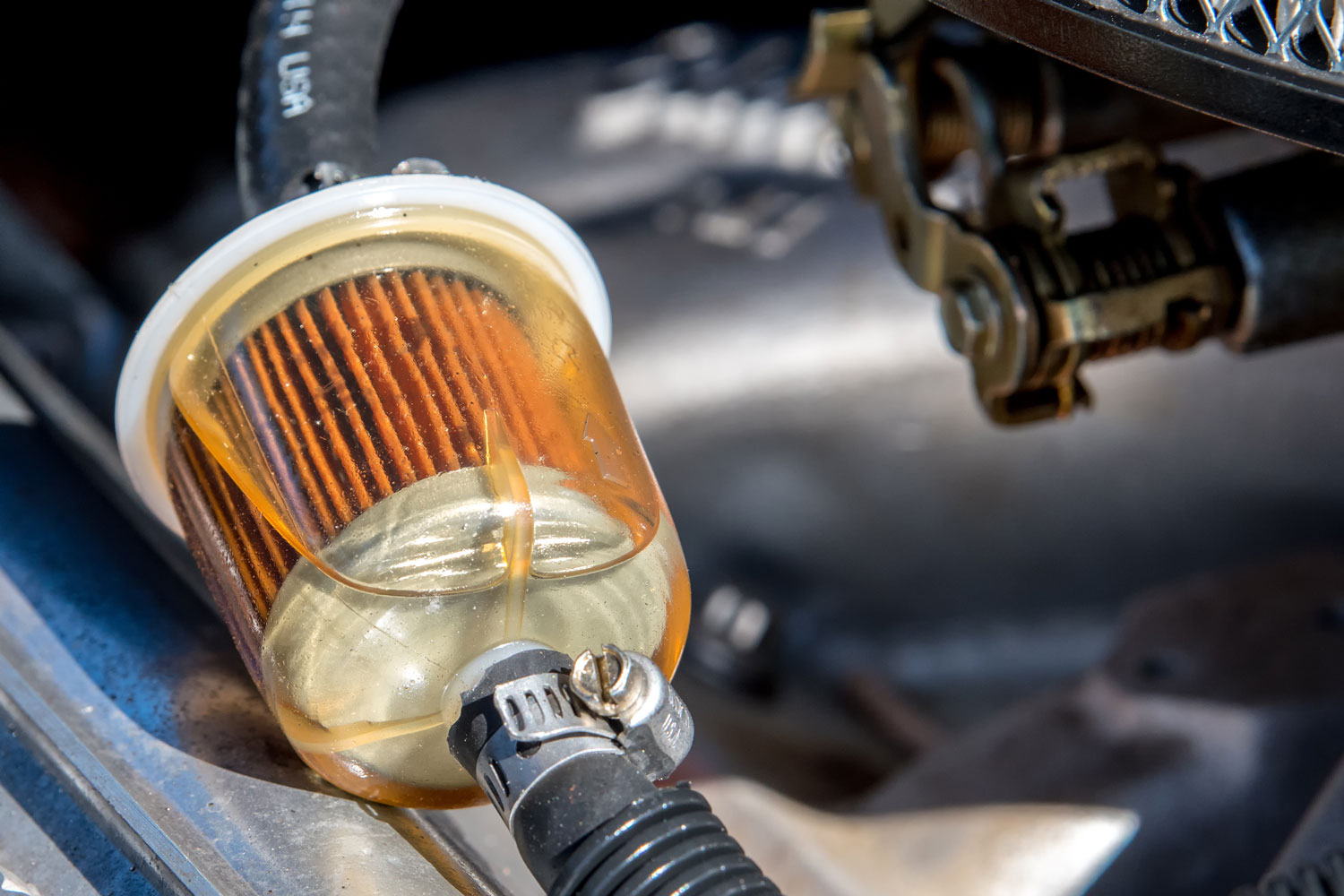
You can safely run your car with a half-full fuel filter. Be careful, however, to not let the level drop too low when doing so.
You might also like:


